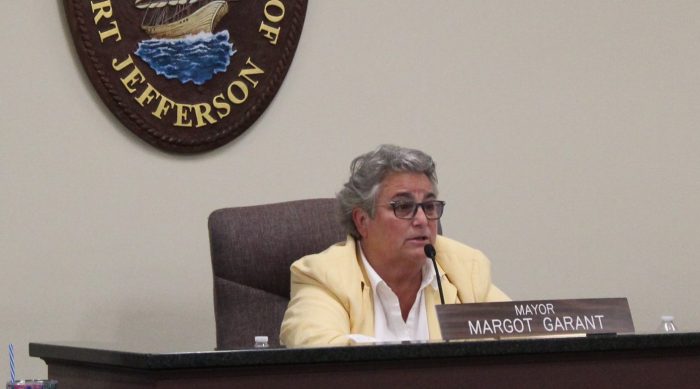Patriotism filled the morning air in Rocky Point on Tuesday, July 4, during a communitywide celebration of American independence.
Public officials, business leaders, Scouts and community members gathered outside Veterans of Foreign Wars Post 6249 — at times braving gusts of rain — for a ceremony in honor of the 247th anniversary of American independence. The festivities combined a traditional reading of the Declaration of Independence with public recognition of the area’s veterans.

“Freedom is a gift given by all of those who fought for us,” said Gary Pollakusky, president and executive director of the Rocky Point Sound Beach Chamber of Commerce, which helped organize the event. “As we celebrate with our friends and family, we must express our thanks for feeling free to the men and women who made that possible.”
Joe Cognitore, commander of Post 6249, performed the commemorative reading of the list of hometown heroes. Following this service, the post commander reinforced the value of reading the Declaration annually.
“Today, we celebrate 247 years of freedom and independence,” he said. “Let us remember that the true power of our nation lies in the unity and resilience of our people.”
“The VFW stands as a testament to the enduring spirit of our veterans and their dedication to our country,” he added. “Together, let us renew our commitment to supporting our veterans and bridging the gap between military service and civilian life.”
Town of Brookhaven Councilwoman Jane Bonner (R-Rocky Point) reflected upon the uniqueness of this annual tradition, noting the sizable and proud veteran population of northeastern Brookhaven.

“I’m proud to represent this community because, trust me, the Declaration of Independence is probably not being read anywhere else today in Suffolk County or Nassau County,” she said. “So props to the people who made it happen.”
New York State Assemblywoman Jodi Giglio (R-Riverhead) said the Declaration stands as a “reminder to everyone of how important it is that we have our freedoms and our liberties,” she said.
Bonner’s colleague on the Town Board, Deputy Supervisor Dan Panico (R-Manorville), used the occasion to reflect upon the historical significance of the American Revolution and the audacity of those who signed the document nearly two and half centuries ago, tying their contributions to those of American service members today.
“We offered law and logic to the rest of the world as to why we should be free,” the deputy supervisor said. “It’s our veterans — from the American Revolution through today — that have been there to ensure that this country … ensues and keeps on going forward.”











![SWR1[61]](https://tbrnewsmedia.com/wp-content/uploads/2023/06/SWR161-700x467.jpg)




